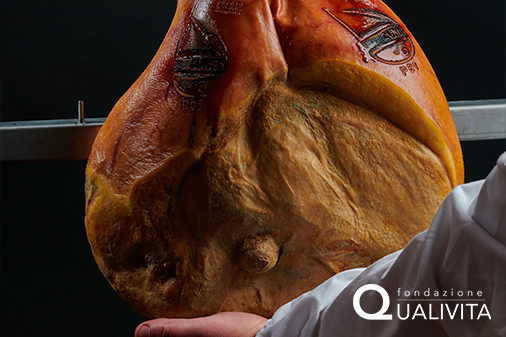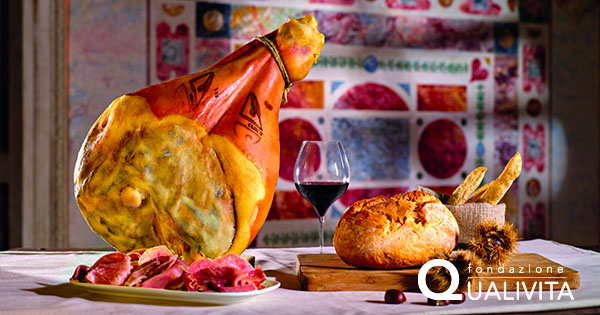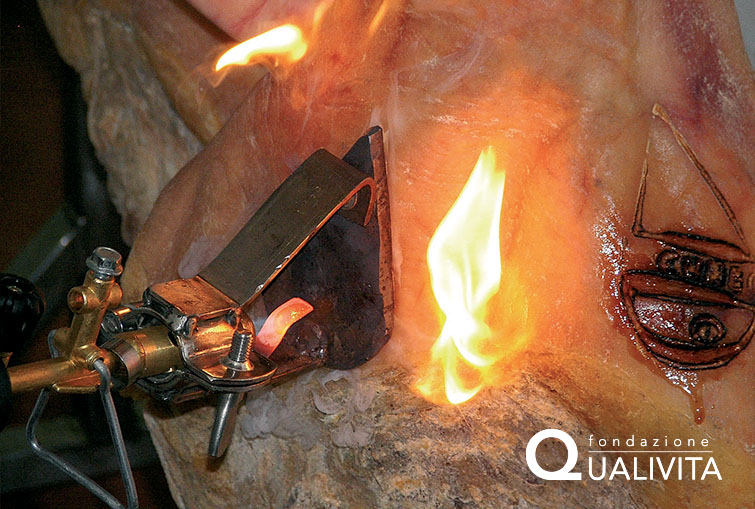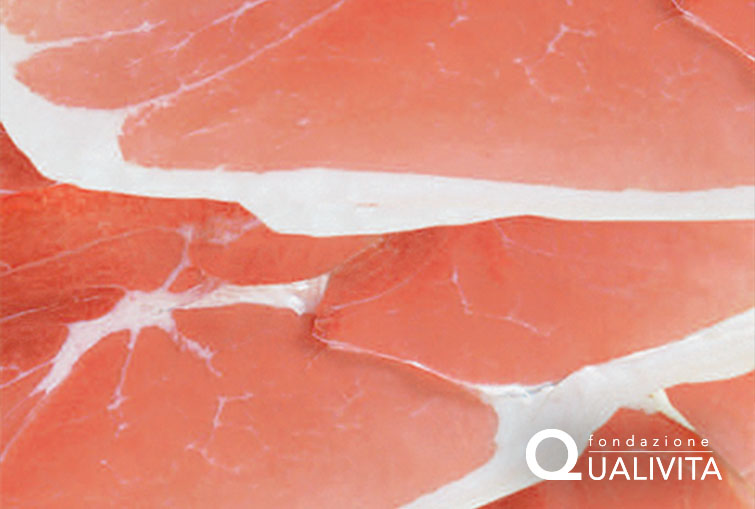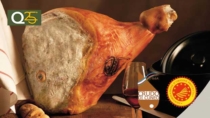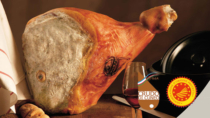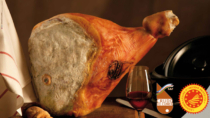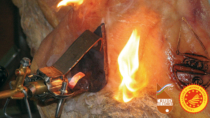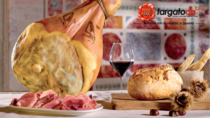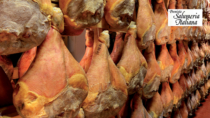Description
Crudo di Cuneo PDO is a raw, cured charcuterie product obtained by processing raw thighs from pigs belonging to the Italian Large White, Italian Landrace and Italian Duroc breeds registered in the Italian Herd Book, or in other international Herd Books recognised by the Italian Herd Book for the production of heavy pigs, either purebred or offspring of their crossbreeds or hybrids.
Production Area
The production area of Crudo di Cuneo PDO is within the provinces of Cuneo and Asti, and in 54 municipalities in the Province of Turin, in the Piedmont region. The pigs must be born, reared and slaughtered within the above-mentioned provinces.
Production Method
The fresh pig thighs are obtained from animals fed mainly with raw materials from the same production area as Crudo di Cuneo PDO. Animals are not slaughtered before they are eight months old. The fresh thighs are cut from the half-carcass and after they have been chilled, are sent to be processed, between 24 and 120 hours after slaughtering. The trotter is removed and the thigh is trimmed and refrigerated at a temperature of between 1-3°C. The product is then dry salted for at least 12 days before being left to rest for at least 50 days in suitable rooms that guarantee the appropriate level of drying. After being trimmed to remove any rough edges, the product is left to cure for at least 10 months, commencing from when the product was salted. During this period, Crudo di Cuneo PDO is greased, which involves the muscular surface being covered with a mix of lard, salt and rice or wheat flour. Greasing may take place either in one stage, between the fifth and seventh month of processing, or in several stages, between the fourth and eighth month. Before being made available for consumption, Crudo di Cuneo PDO is branded on the two larger sides of the thigh.
Appearance and Flavour
Crudo di Cuneo PDO has a round shape, with the haunch but no trotter. After curing, it weighs between 8.5 and 12 kg. The lean part of the slice is uniform red in colour, while the fat is white. It has a soft, firm consistency and a sweet, fragrant aroma.
History
Pig farming and the processing of the meat derived from these animals, has ancient origins in the area which today is indicated as the production area of Crudo di Cuneo PDO. The origins of pig thigh processing in this area date back to the 17th century, as evidenced by a document from 1618, where there is reference to the work of Piedmont pork butchers. After the second half of the 19th century, ham from the Cuneo plain became increasingly more important, when the new middle class turned ham and ham processing into a true art, and the nobles and clergy, bound by tradition, requested personalised recipes from the master charcutiers who were the founders of the first artisan charcuterie factories.
Gastronomy
Crudo di Cuneo PDO is best sliced just before eating and should be protected with cling film, as air and light tend to dry its surface, causing the loss of some of its organoleptic properties. It is a perfect starter or second course, eaten on its own or together with other local charcuterie products and cheeses. It is ideal with melon, kiwi and figs, as they bring out its flavour.
Marketing
The product is marketed as Crudo di Cuneo PDO. It is sold whole, in pieces or slices, unpackaged or vacuum-packed.
Distinctive Features
Crudo di Cuneo PDO is characterised by an excellent covering of fat and the uniform red colour of the lean part. It is produced in one of the shortest supply chains in Italy, an important prerequisite for environmentally and economically sustainable production. The short distance transport also prevents bruising and the formation of haematoma or veins in the product.





